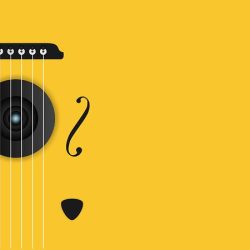Have you ever found yourself lost in a song, only to be jolted into a spine-tingling haze as the music swells, leaving you with delicious goosebumps that dance across your skin? It’s one of those inexplicable moments that many of us experience, yet few can truly explain. What is it about music that triggers such profound physical reactions? Is it the haunting melody, the heartfelt lyrics, or something deeper within our own psyche? In this article, we’ll embark on a journey to unravel the fascinating enigma behind why music elicits goosebumps. Along the way, we’ll explore the science of sound, the emotional landscape tied to our favorite tunes, and the shared human experience that binds us through rhythm and harmony. So, plug in your earbuds and let’s dive into the captivating world of music and its mysterious power over our bodies and souls.
Exploring the Science Behind Musical Chills
Ever get that spine-tingling sensation while listening to your favorite song? It’s like a mini rollercoaster ride for your emotions! This reaction, often referred to as “frisson,” occurs when our brain releases dopamine, the feel-good neurotransmitter, in response to musical peaks or unexpected shifts. It’s fascinating how melodies can trigger an emotional rush much like those moments of suspenseful silence followed by a dramatic fall in a thriller film. Imagine the last time you heard that one song that made you stop in your tracks, eyes closed, lost in the moment! That combination of rhythm, harmony, and intensity effectively plays our brain like a finely tuned instrument, creating a symphony of feelings and physiological responses.
Several factors contribute to this extraordinary experience, transforming simple sounds into profound moments. Consider these elements:
- Melodic Structure: The complexity and progression of a song often build anticipation.
- Lyrics: Powerful storytelling can hit home, making the listener relate personally.
- Instrumentation: Unique instrument combinations heighten emotional depth.
- Memory Associations: Familiar tunes can evoke memories, deepening emotional responses.
When these elements intertwine seamlessly, they create a perfect storm of emotional and physiological response. So, next time a song gives you goosebumps, you’ll know it’s not just in your head; it’s a beautiful interplay of art, biology, and emotion that makes music not just something we listen to, but an experience we feel deep within!

The Emotional Connection: How Music Resonates with Our Feelings
Imagine a time when a certain song played on the radio and, just like that, you were transported back to a moment in your life—a whirlwind of emotions washed over you. Music has this extraordinary power to tap into our innermost feelings, often leaving us with a chill down our spine or those delightful goosebumps. Why is that? Because our brains are wired to make connections between melodies and memories. When we listen to our favorite tunes, our emotional centers light up, allowing us to relive experiences associated with particular songs. This phenomenon isn’t just magic; it’s the result of intricate neural pathways igniting within us, bridging the gap between sound and sentiment.
Furthermore, the elements of music—its tempo, melody, and harmony—are like emotional crayon boxes, coloring our feelings in unique ways. For instance, a slow, melancholic violin piece can evoke sadness, while an upbeat pop anthem might fill us with joy and energy. Each of us has our own soundtrack, curated throughout our lives, filled with tunes that resonate deeply. Consider these layers:
| Musical Element | Emotional Impact |
|---|---|
| Tempo | Fast-paced tunes often spark excitement. |
| Melody | Catchy melodies can evoke nostalgia. |
| Harmony | Rich harmonies can bring about feelings of comfort. |
Isn’t it fascinating how a simple song can weave through our emotional landscape, stitching together fragments of our history? Music acts as our emotional compass, guiding us through life’s vast ocean of feelings. It’s more than just sound; it’s the heartbeat of our memories and a canvas for our emotions, creating connections that linger long after the last note fades away.

Unlocking the Moment: Identifying Triggers That Cause Goosebumps
Goosebumps are those little, delightful surprises that seem to bubble up at the most unexpected moments, right? They can hit you during a powerful symphony, a gripping movie scene, or while listening to a heart-wrenching ballad. So, what causes that sensation? It often comes down to a few key elements that rely on our emotional connection to music. Emotional dynamics play a huge role; sudden shifts in volume and intensity can send chills down your spine. Think about those climactic moments when a song crescendos to its peak. It’s like riding a roller coaster, where the anticipation builds up, and then—boom! You’re hit with the exhilarating rush.
Another essential trigger is personal association. Music has an uncanny ability to evoke memories tied to specific moments in our lives. This could be a song that reminds you of a summer romance or one that played during a bittersweet goodbye. When these tunes resurface, they don’t just bring back memories; they can temporarily transport you back to those feelings, enveloping you in nostalgia. Additionally, our biological wiring also plays a part; the release of dopamine when we experience something pleasurable is precisely that warmth we feel when our favorite song plays. Essentially, music wraps us in a symphony of emotions, leading to those goosebumps every time we press play.
Creating Your Own Musical Experience: Tips for Finding Chills in Sound
There’s something magical about sounds that send shivers down your spine, isn’t there? To truly harness that power, you’ll want to dive into creating your own musical experience. Think about how certain songs become the soundtrack to our memories. Start by curating playlists that reflect your moods or specific moments in life. You can even explore your local music scene, whether it’s open mic nights or intimate gigs. Sometimes, hearing a piece live can tap into emotions that just listening at home can’t. Engage in a cozy space with dim lights, grab your favorite beverage, and let the music wash over you like a warm blanket. It’s about creating an atmosphere that elevates your listening experience!
Now, if you really want to dive deeper, consider the elements of your music selection. You might want to experiment with different genres or take a different approach to familiar tracks by seeking out remixes or acoustic versions. Pay attention to the structure of the music—the build-ups, the drops, even those soft, whispering notes that make your heart race. Think about arranging sounds that resonate with you personally and find the sweet spots that give you chills. Don’t forget the power of silence; sometimes, a pause in the music can create an intensity that’s just as powerful. Trust your instincts and enjoy the nuances that make each listening session special.

Insights and Conclusions
As we wrap up our exploration of the enchanting connection between music and the sensations it evokes, it’s clear that the experience of getting goosebumps isn’t just a curious phenomenon—it’s a profound slice of our humanity. Music transcends mere sound; it threads intricate emotional tapestries that weave through our minds and hearts. Just think of it as a universal language, a signal that escapes the boundaries of words to reach deep into our psyches.
The next time a powerful melody sends shivers down your spine or brings a lump to your throat, take a moment to appreciate that magic. Whether it’s the quivering strings of a violin, the booming crescendo of a symphony, or the raw honesty of a singer-songwriter, remember that these moments connect us all in a shared experience of vulnerability and joy. So, let the music play on, and let those goosebumps remind you of the beauty and complexity of feeling—because in that flicker of sensation lies a little piece of our very essence. Keep listening, keep feeling, and who knows? You might just uncover even more mysteries hidden within those notes. 🎶



